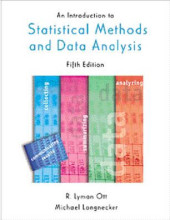RNA: Transcription, processing, and decay
52 important questions on RNA: Transcription, processing, and decay
A process by which different messenger RNAs are produced from the same primary transcript, through variations in the splicing pattern of the transcript. Multiple mRNA “isoforms” can be produced in a single cell or the different isoforms can display different tissue-specific patterns of expression. If the alternative exons fall within the open reading frames of the mRNA isoforms, different proteins will be produced by the alternative mRNAs.
A special structure, consisting of a 7-methylguanosine residue linked to the transcript by three phosphate groups, that is added in the nucleus to the 5′ end of eukaryotic mRNA. The cap protects an mRNA from degradation and is required for translation of the mRNA in the cytoplasm.
The protein tail of the ß subunit of RNA polymerase II; it coordinates the processing of eukaryotic pre-mRNAs including capping, splicing, and termination.
- Higher grades + faster learning
- Never study anything twice
- 100% sure, 100% understanding
An epigenetic phenomenon whereby a transgene becomes reversibly inactivated along with the gene copy in the chromosome.
The simultaneous transcription and processing of eukaryotic pre-mRNA.
A protein complex that recognizes long double-stranded RNA molecules and cleaves them into double-stranded siRNAs. Dicer plays a key role in RNA interference.
An RNA molecule comprised of two complementary strands.
A way to describe the relative location of a site in a DNA or RNA molecule. A downstream site is located closer to the 3′ end of a transcription unit.
The stage of transcription that follows initiation and precedes termination.
A gene that is normally present in an organism, in contrast with a foreign gene from a different organism that might be introduced by transgenic techniques.
Any nonintron section of the coding sequence of a gene; together, the exons correspond to the mRNA that is translated into protein.
The process by which a gene’s DNA sequence is transcribed into RNA and, for protein-coding genes, into a polypeptide.
A eukaryotic protein complex that does not take part in RNA synthesis but binds to the promoter region to attract and correctly position RNA polymerase II for transcription initiation.
A gene that is not expressed owing to epigenetic regulation. Unlike genes that are mutant due to DNA sequence alterations, genes inactivated by silencing can be reactivated.
A popular term for a transgenic organism, especially applied to transgenic agricultural organisms.
So named because the GU and AG dinucleotides are almost always at the 5′ and 3′ ends, respectively, of introns, where they are recognized by components of the splicosome.
The first stage of transcription or translation. Its main function in transcription is to correctly position RNA polymerase before the elongation stage, and in translation it is to correctly position the first aminoacyl-tRNA in the P site.
An intron; a segment of largely unknown function within a gene. This segment is initially transcribed, but the transcript is not found in the functional mRNA.
Nonprotein-coding transcripts that are over approximately 200 nucleotides in length.
An RNA molecule transcribed from the DNA of a gene; a protein is translated from this RNA molecule by the action of ribosomes.
A class of functional RNA that regulates the amount of protein produced by a eukaryotic gene.
RNA that is not translated into protein.
An RNA transcribed from pi-clusters that helps to protect the integrity of plant and animal genomes and to prevent the spread of transposable elements to other chromosomal loci. piRNAs restrain transposable elements in animals.
A string of adenine nucleotides added to mRNA after transcription.
Modifications of amino acid side groups after a protein has been translated.
A very large eukaryotic protein complex comprising RNA polymerase II and the six general transcription factors (GTFs), each of which is a multiprotein complex.
Eukaryotic RNA before it has been processed.
A regulator region that is a short distance from the 5′ end of a gene and acts as the binding site for RNA polymerase.
An experiment in which cells are grown in radioactive medium for a brief period (the pulse) and then transferred to nonradioactive medium for a longer period (the chase).
A class of RNA molecules, encoded in the nucleolar organizer, that have an integral (but poorly understood) role in ribosome structure and function.
An RNA with enzymatic activity—for instance, the self-splicing RNA molecules in Tetrahymena
A multisubunit protein complex that associates with siRNAs and is guided to a target mRNA by base complementarity. The target mRNA is cleaved by RISC activity.
An enzyme that catalyzes the synthesis of an RNA strand from a DNA template. Eukaryotes possess several classes of RNA polymerase; structural genes encoding proteins are transcribed by RNA polymerase II.
The bacterial multisubunit complex composed of the four subunits of the core enzyme plus the σ factor
The collective term for the modifications to eukaryotic RNA, including capping and splicing, that are necessary before the RNA can be transported into the cytoplasm for translation.
The name of a popular theory that RNA must have been the genetic material in the first cells because only RNA is known to both encode genetic information and catalyze biological reactions.
The first example of catalytic RNA; in this case, an intron that can be removed from a transcript without the aid of a protein enzyme.
A bacterial protein that, as part of the RNA polymerase holoenzyme, recognizes the 10 and 35 regions of bacterial promoters, thus positioning the holoenzyme to initiate transcription correctly at the start site. The σ factor dissociates from the holoenzyme before RNA synthesis.
Short double-stranded RNAs produced by the cleavage of long double-stranded RNAs by Dicer
Any of several short RNAs found in the eukaryotic nucleus, where they assist in RNA processing events
A reaction that removes introns and joins together exons in RNA.
A general transcription factor that binds to the TATA box and assists in attracting other general transcription factors and RNA polymerase II to eukaryotic promoters.
A DNA sequence found in many eukaryotic genes that is located about 30 bp upstream of the transcription start site.
A molecular “mold” that shapes the structure or sequence of another molecule; for example, the nucleotide sequence of DNA acts as a template to control the nucleotide sequence of RNA during transcription.
The last stage of transcription; it results in the release of the RNA and RNA polymerase from the DNA template
The site at which the double helix is unwound so that RNA polymerase can use one of the DNA strands as a template for RNA synthesis.
A class of small RNA molecules that bear specific amino acids to the ribosome in the course of translation; an amino acid is inserted into the growing polypeptide chain when the anticodon of the corresponding tRNA pairs with a codon on the mRNA being translated.
The region of the RNA transcript at the 5′ end upstream of the translation start site.
Refers to a DNA or RNA sequence located on the 5′ side of a point of reference.
In which two general classes can RNA molecules be divided.
- Messenger RNA (mRNA): information from DNA is transferred to mRNA through the process of transcription, and mRNA passes the information on the proteins through the process of translation.
- noncoding RNA (ncRNA): it does not encode proteins, instead the ncRNA is the final product whose function is determined by its sequence and three dimensional structure
Why are the bases GU, A and AG so essential in slicing process?
Where is the information for snRNA stored in an organism?
The question on the page originate from the summary of the following study material:
- A unique study and practice tool
- Never study anything twice again
- Get the grades you hope for
- 100% sure, 100% understanding
































